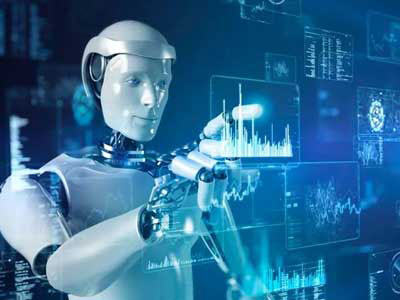Key Takeaway
The full form of “robot” is actually not an acronym. The term “robot” comes from the Czech word “robota,” which means forced labor or drudgery. It was first used by playwright Karel Čapek in his 1920 play “R.U.R.” (Rossum’s Universal Robots). In this play, robots were artificial people made to perform tasks for humans. Today, robots are machines designed to perform specific tasks automatically. They are widely used in manufacturing, healthcare, and many other industries, improving efficiency and precision. So, “robot” simply refers to these versatile machines, not an abbreviation.
Etymology and History
The term “robot” originates from the Czech word “robota,” which means forced labor or drudgery. It was coined by Karel Čapek in his 1920 play “R.U.R.” (Rossum’s Universal Robots). The play introduced the revolutionary idea of artificial beings created to perform tasks typically done by humans. This concept captured the public’s imagination and significantly influenced the development of modern robotics. Čapek’s vision of robots performing mundane and repetitive tasks laid the groundwork for the advancements we see today, where robots are integral to various industries, enhancing efficiency and productivity.

Common Misconceptions
In the realm of industrial automation, robotics isn’t confined to humanoid machines mimicking human actions. Instead, it encompasses a vast array of automated systems that revolutionize manufacturing processes across industries. Imagine robotic arms tirelessly welding car parts on assembly lines with precision that surpasses human capability. These machines operate in environments that are often hazardous or require repetitive tasks, where their efficiency and consistency shine.
Beyond manufacturing, robots extend their reach into logistics through Automated Guided Vehicles (AGVs), navigating vast warehouses with intricate algorithms that optimize routes and manage inventory. These vehicles exemplify how robotics enhances operational efficiency and reliability in large-scale logistics operations.
Robots are not just tools but integral components in industries where precision, reliability, and speed are critical. They’re designed not only to perform tasks autonomously but also to collaborate with human workers in what are known as cobots or collaborative robots. These cobots are engineered to work alongside humans, augmenting productivity while ensuring safety, thereby reshaping industrial practices worldwide.
Modern Usage and Interpretation
In healthcare, the application of robotics goes far beyond traditional perceptions. Today, robotic systems are pivotal in surgical procedures, where their precision and dexterity enable surgeons to perform complex operations with unparalleled accuracy. These surgical robots are equipped with advanced sensors and actuators, allowing surgeons to operate with minimally invasive techniques, reducing recovery times and risks for patients.
Moreover, robots are employed in rehabilitation therapies, aiding patients in recovering motor functions through repetitive, precise movements. These robotic rehabilitation systems are tailored to individual patient needs, providing consistent support and feedback that facilitate faster recovery and improved outcomes.
Robots also play a crucial role in caregiving, assisting healthcare professionals in tasks such as patient lifting and transferring, reducing the physical strain on caregivers and improving patient comfort and safety. These robots are designed not to replace human caregivers but to complement their efforts, ensuring better care standards and operational efficiency in healthcare facilities worldwide.
Industrial Context of Robots
In the realm of industrial applications, robots play a pivotal role in revolutionizing processes across various sectors. These machines are not merely tools but sophisticated systems designed to handle repetitive tasks with unparalleled precision. Take, for instance, the automotive industry, where robots are integral to assembly lines. They perform tasks like welding, painting, and assembly of components with utmost accuracy and consistency, ensuring that each vehicle meets stringent quality standards.
Robots streamline production cycles by minimizing errors and maximizing efficiency. This efficiency translates into cost savings and higher output, crucial for meeting consumer demands in competitive markets. Beyond automotive, industries like electronics, pharmaceuticals, and food processing rely heavily on robotic automation to enhance productivity and maintain consistent quality.
Looking forward, the integration of AI and machine learning will propel robotic capabilities even further. Terms like “autonomous systems” and “smart robotics” are emerging, reflecting the trend towards robots that can make decisions independently based on real-time data analysis. This evolution not only increases operational efficiency but also opens doors to new applications in areas where human intervention was previously necessary.
Future Trends in Robotics Terminology
The future of robotics is set to redefine how industries operate, driven by advancements in technology and evolving market needs. AI-powered robots are poised to become ubiquitous, transforming from mere mechanical tools to intelligent systems capable of learning and adapting in real-time. This shift towards “smart robotics” denotes machines that can perceive their environment, make decisions, and interact seamlessly with humans and other machines.
As these technologies mature, industries will witness a paradigm shift in automation capabilities. Tasks that once required human oversight will increasingly be handled autonomously by robots, leading to safer workplaces and enhanced operational efficiencies. For instance, in logistics and warehousing, autonomous mobile robots (AMRs) are already optimizing inventory management and order fulfillment processes with minimal human intervention.
Moreover, the concept of collaborative robots, or “cobots,” is gaining traction. These robots work alongside humans, augmenting their capabilities rather than replacing them entirely. Cobots are designed to be safe, flexible, and easy to program, making them suitable for a wide range of tasks from small-scale assembly to intricate surgeries in healthcare.
Conclusion
Robots have a rich history and a promising future in industrial automation. Understanding their origins, debunking myths, and embracing their applications is vital for aspiring engineers. As robotics technology advances, robots will redefine efficiency, safety, and precision across industries. Empowering the next generation to harness this technology responsibly ensures a future where robots play a pivotal role in shaping innovation and improving industrial processes.
